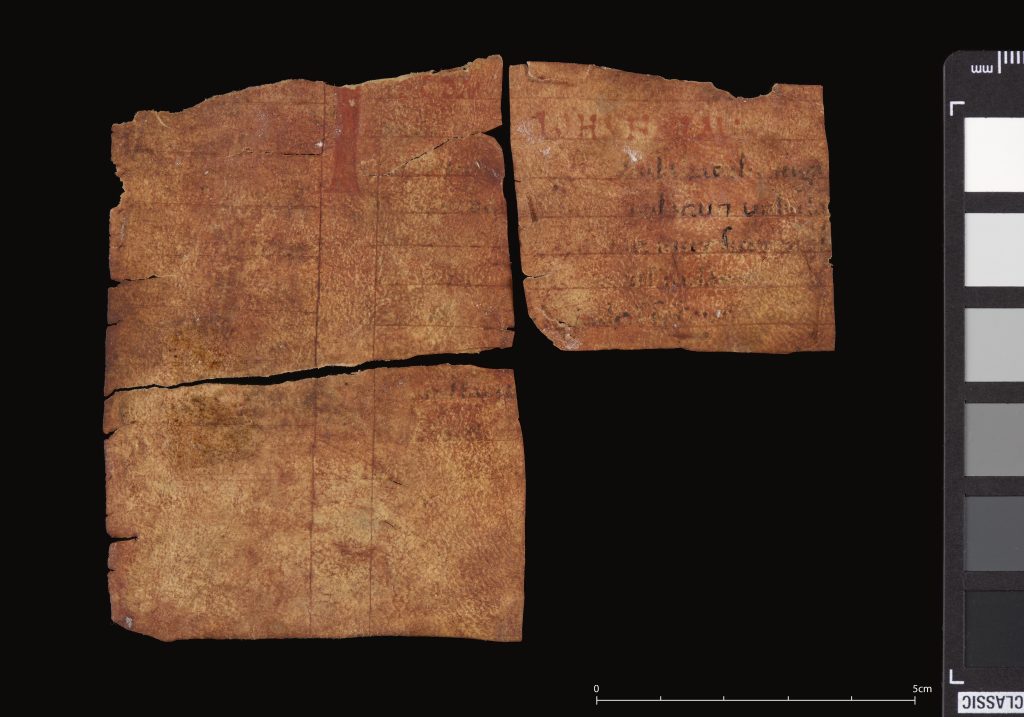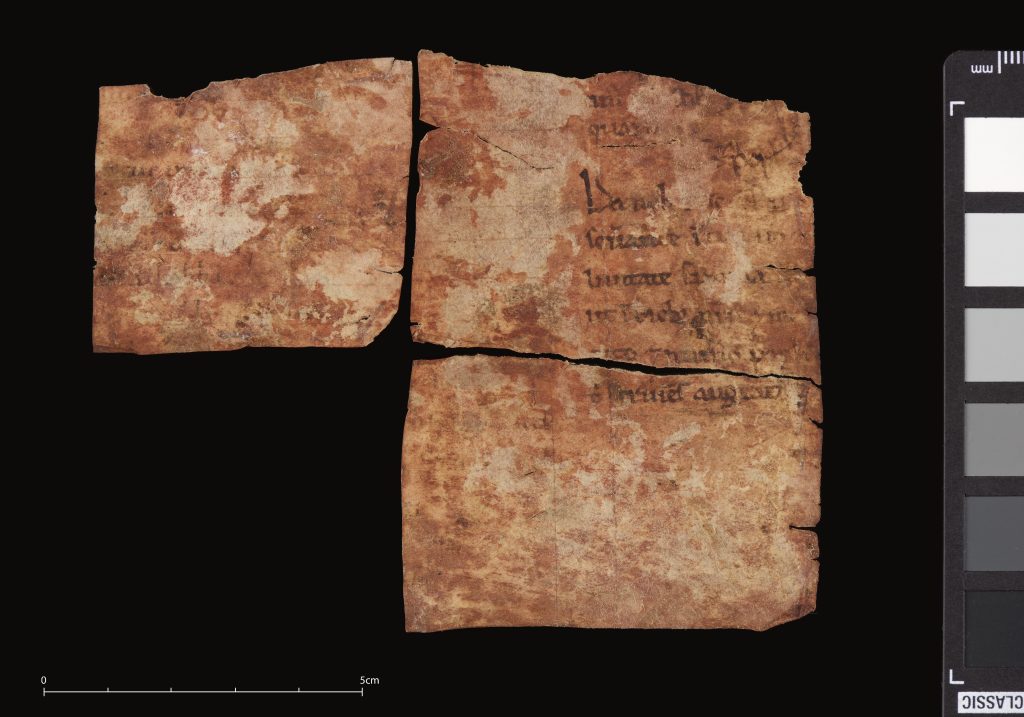
This Virgin of the Sedes Sapientiae (‘Throne of Wisdom’) type is seated frontally on a throne with painted architectural decorations on the sides. Mary wears a golden robe that falls down in thick V-shaped folds and is fastened with a golden belt. Her golden mantle, draped over her right knee, is lined with painted imitation fur. On her left knee, in a skewed position, sits the Christ Child in a golden robe and mantle. He holds a book in his left hand, while his now-lost right hand was probably raised in a gesture of blessing. His right foot touches Mary’s right knee.

Martin Blindheim identified the Virgin and Child from Kyrkjebø as a domestic imitation of the prototype of the Hove Madonna (MA 27). However, recent analysis indicates a possible origin in northern France. Inside the hollowed-out figure, fragments of inscribed parchments were found, whose script, according to the paleographers Åslaug Ommundsen and Michael Gullick, suggests that they were produced in a northern French scriptorium around 1200. The fragments, probably taken from a discarded book, were inserted secondarily inside the sculpture in order to fill holes that had occurred during the carving process before the sculpture was polychromed. Stylistically, the figure shows similarities to contemporary northern French and Norwegian Virgins, which again indicates the international spread of the Madonna type in question.


The sculpture stands on a podium before a dossal or back panel. Iron pins on either side of the panel indicate that it was originally a tabernacle shrine that could be closed off with wings. The sides of the high chest-shaped base are decorated with painted window motifs and equipped with narrow slats as supports for the wings when closed. On top of the base sits a five-sided podium that served as a socle to the figure. The dossal is painted with a diamond pattern of white lines on a green background filled with red quatrefoils and spanned by a white arch. The red surface above the arch continues on the baldachin ceiling, of which only a fragment is preserved.
The tabernacle shrine was secondarily registered in 1902 as originating from Giske in Sunnmøre. From that moment on, it was exhibited together with a Virgin and Child from that church. However, its proportions seem too small for this. Much evidence indicates that the tabernacle shrine originally stems from Kyrkjebø. In 1862, Nicolay Nicolaysen mentioned a baldachin that had been transferred to the museum together with the Virgin and Child from that church.
Recent art technological investigations have revealed a similar painted decoration and material execution between the baldachin and the Marian figure. Painted round black decorations surrounded by small dots can be observed on the base podium and on the Virgin’s throne. Moreover, the pentagonal top of the podium exactly matches the base of the figure, which confirms that both originally belonged together. The fragmentary baldachin shows the beginnings of a circle with sun and moon on a green background that as it were formed a heaven over the Virgin and Child. With a reconstructed opened width of c. 236 cm, the tabernacle shrine from Kyrkjebø belongs to the largest of its kind in Norway.
Northern France (?), 1240-1260
From Kyrkjebø (Sogn), in the museum before 1862
Oak, polychromy
H 101 x W 36 x D 21 cm (Virgin and Child)
H 166 x W 68.5 x D 50 cm (shrine)
Inv. nos. MA 292 (Virgin and Child), MA 334b (shrine)